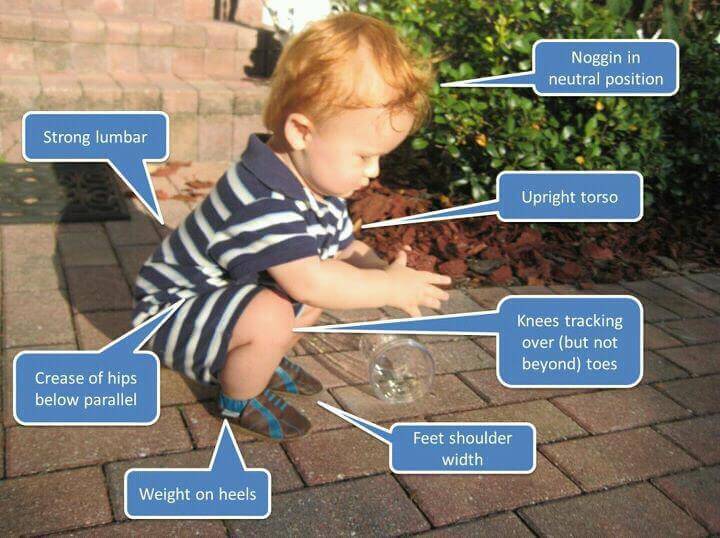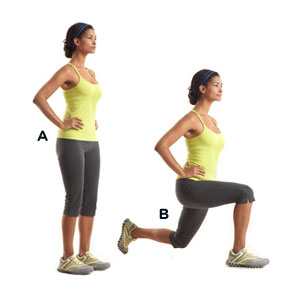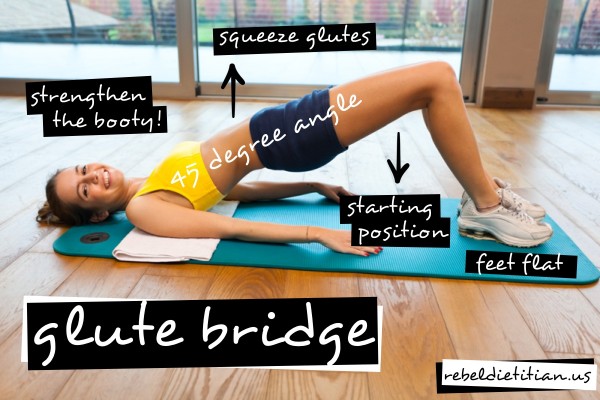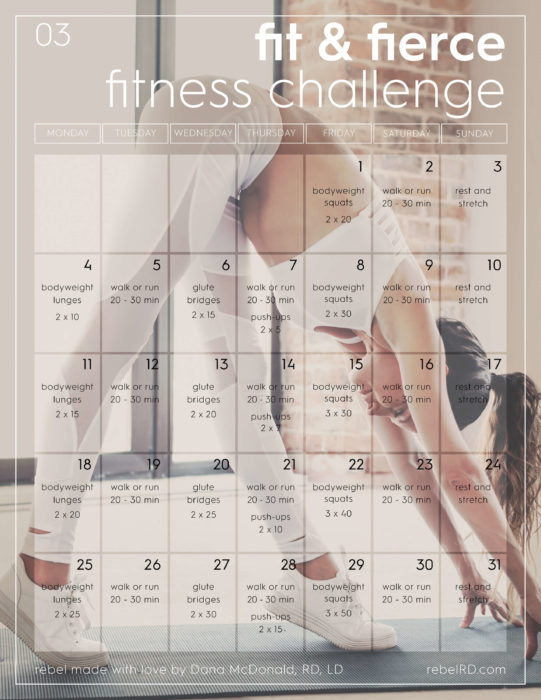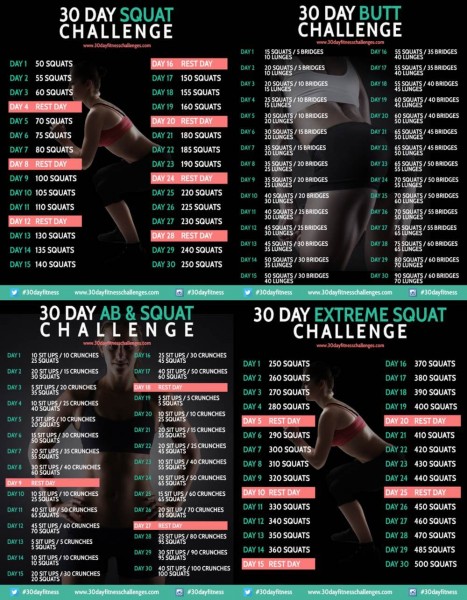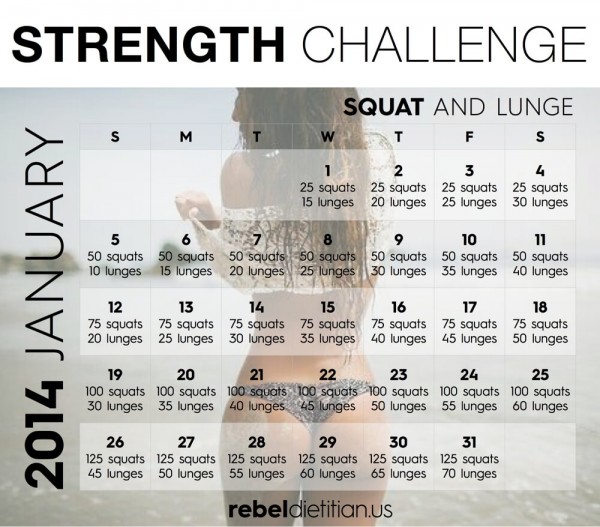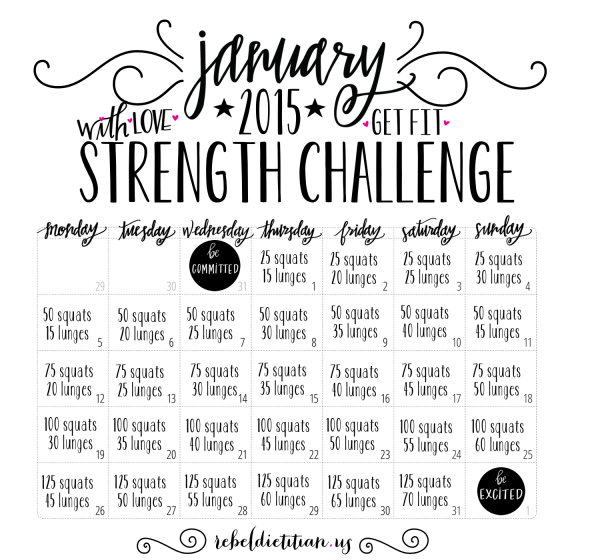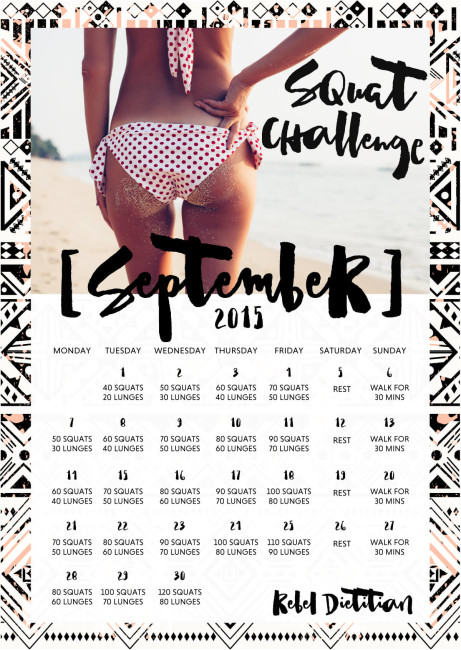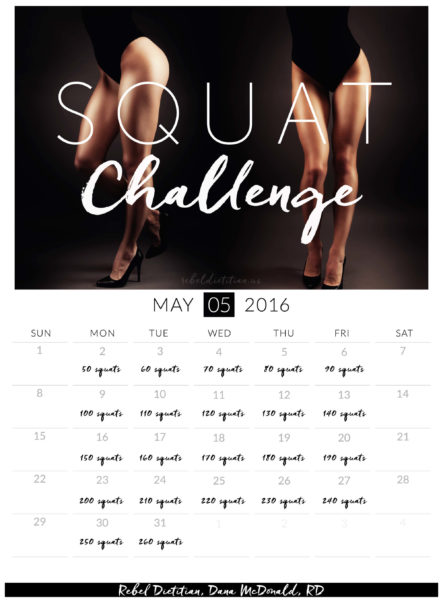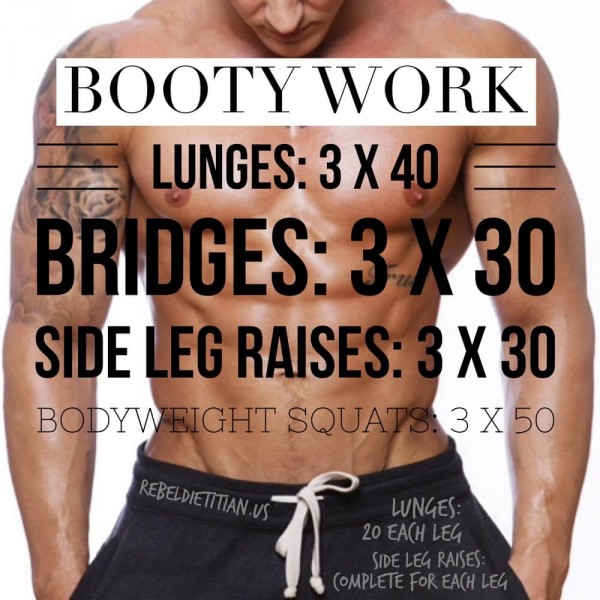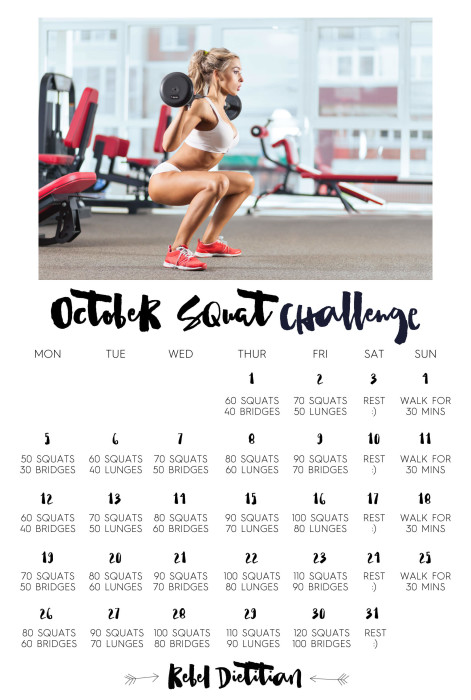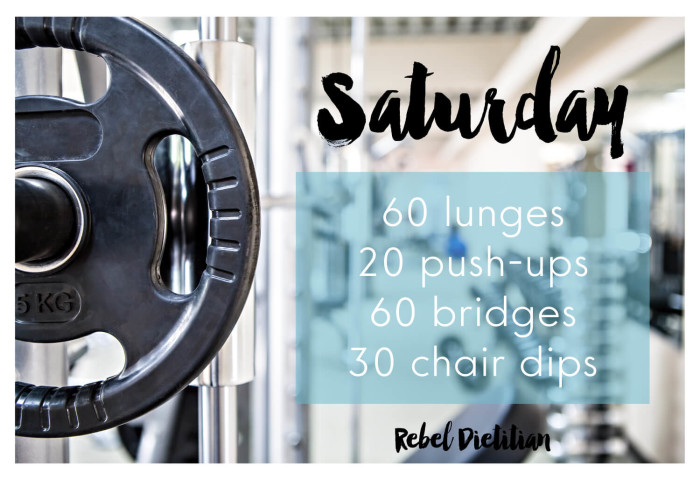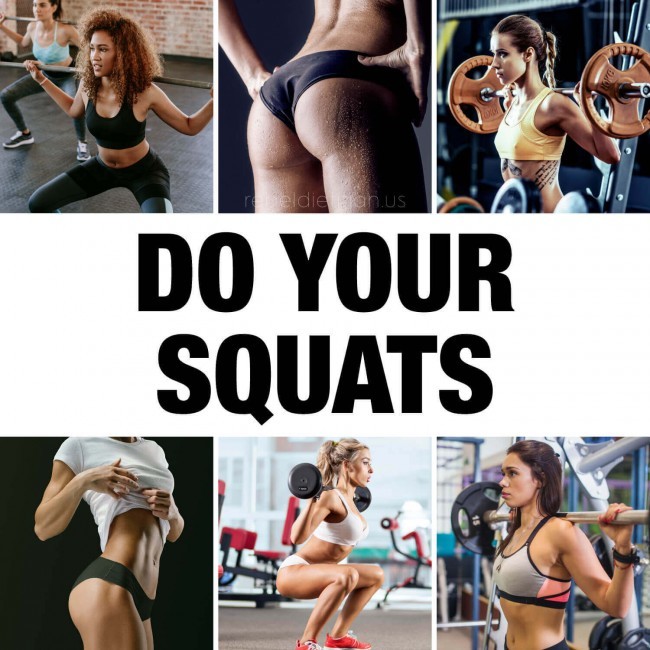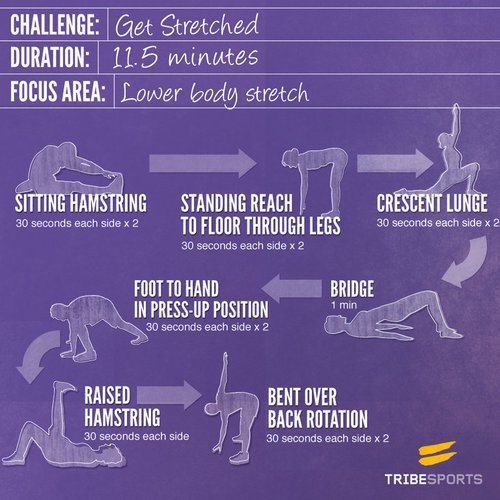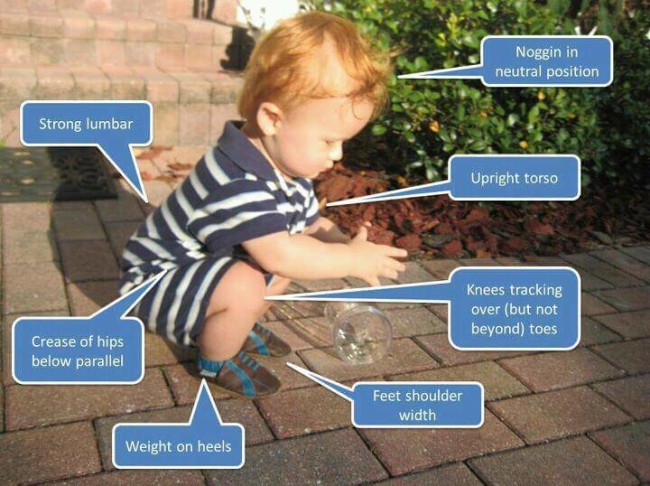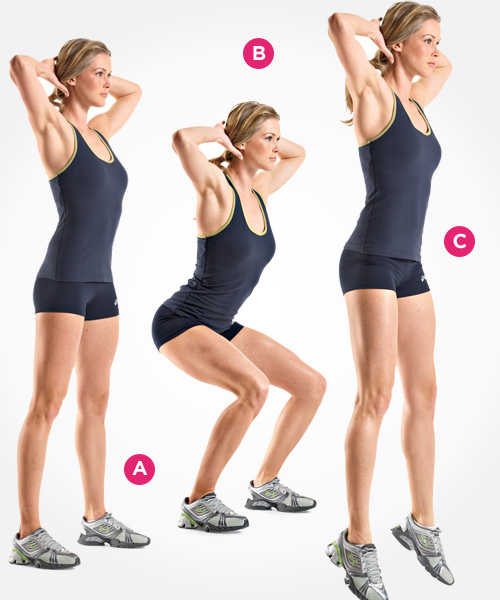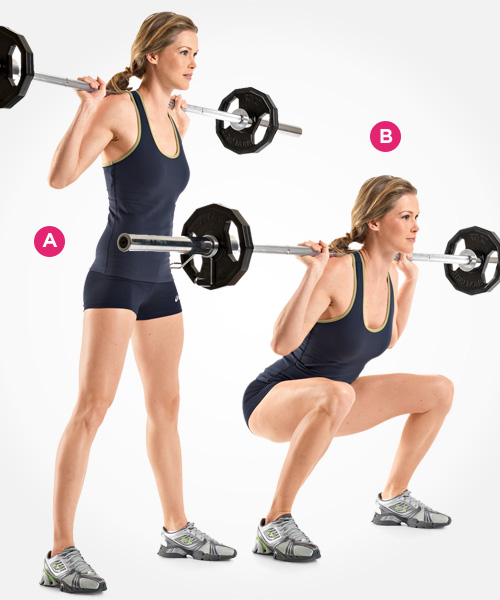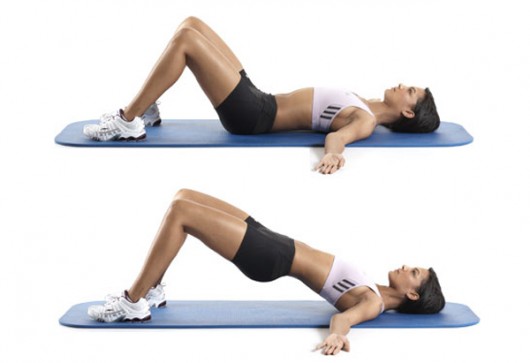Within this page you’ll find the fitness challenges I’ve created over the last few the years (scroll down to the bottom of the page, you’ll see ’em). All of the fitness challenges involve bodyweight exercises; however, you are free to add weights if you’d like. Some of the challenges are strict squat challenges, while other challenges include additional exercises (e.g., bridges and lunges). I review the instructions for all of the exercises towards the bottom of this page. As always, you are encouraged to modify the workouts to better meet your current fitness level, personal preferences, and fitness goals.
Train Responsibly
Starting an exercise program can be challenging, but it’s also very rewarding and one of the best things you can do to live a healthy life. With that being said, please consult with your doctor before beginning any new exercise program, especially if you’re a man over 45, a woman over 55, or if you have cardiovascular risk factors, such as smoking, high blood pressure, high cholesterol, diabetes or a family history of heart disease.
Bodyweight Squats
This challenge consists of bodyweight exercises (not weighted squats or lunges); however, you are welcome to use weights, that is totally up to you.
Step 1
Begin standing with your feet slightly wider than hip-width and your toes turned out slightly. Your hands are by your sides with your palms facing inward. Chest up and look straight ahead – do not look up.
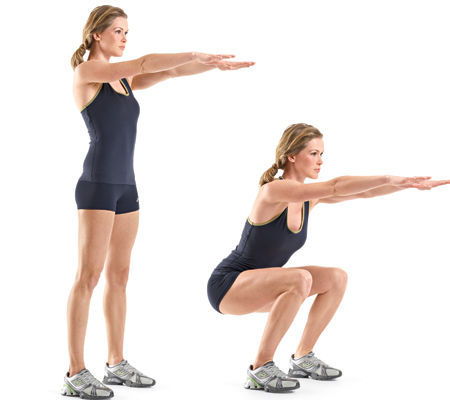
Step 2
Shove your knees out. Shift your weight back into your heels as your hips begin to push toward the wall behind you.
Step 3
Your hips and knees bend simultaneously. As you lower your hips the knees bend and will start to shift forward slowly. Keep the abdominals and core muscles engaged and try to keep your back flat (do not tuck the tail or arch the lower back).
Step 4
Below parallel. Continue to lower yourself until your thighs are below parallel. If your heels begin to lift off the floor or your torso begins to round, return to start position. Keep your body weight centered over your mid-foot and heels – not your toes. You should be able to wiggle your toes during a squat.
Step 5
Drive With Your Hips. While maintaining the position of your back, chest and head and with the abdominals engaged, exhale and return to start position by pushing your feet into the floor through your heels.
Squat Like A Pro
This is how we should all be squatting. Notice how the baby is squatting below parallel, this is our goal, too.
Walking Lunges
The total number of lunges described in the poster is the total number of lunges. For example: 70 lunges = 35 lunges each leg. It does not mean 70 lunges per leg for a total of 140 lunges, that is a lot for anyone.
Step 1
Starting Position: Stand with your feet together. Pull your shoulder blades toward your hips. Engage your abdominal/core muscles (“brace”) to stabilize your spine.
Step 2
In preparation to step forward, slowly lift one foot off the floor and find your balance on the standing leg. Try not to move the standing foot and maintain balance without wobbling. Pause. Hold this position briefly before stepping forward. The raised foot should land on the heel first. Slowly shift your bodyweight onto the lead foot, placing it firmly on the floor. As you shift your body weight to the lead foot/leg, avoid the tendency to tilt or sway the upper body and try not to move the forward foot.
Step 3
As you step forward into the lunge, focus on a downward movement of your hips toward the floor. Avoid driving your hips forward. This will help control the forward movement of your shinbone over your foot. Continue lowering your body to a comfortable position or until your front thigh becomes parallel with the floor and your shinbone is in a slight forward lean. During the movement, slightly bend forward at your hips. Keep the back straight.
Step 4
Firmly push off with the front leg, activating both your thighs and butt muscles to return to your upright, starting position. We suggest you first learn how to perform single leg-stands on the ground before performing this forward lunge. Once you master the forward lunge, you can progress to doing a lunge using arm drivers and multi-directional glute activation lunges.
Glute Bridges
Step 1
Starting Position: Lie on your back on an exercise mat or the floor in a bent-knee position with your feet flat on the floor. Place your feet hip-width apart with the toes facing away from you. Gently contract your abdominal muscles to flatten your low back into the floor. Attempt to maintain this gentle muscle contraction throughout the exercise.
Step 2
Upward Phase: Gently exhale. Keep the abdominals engaged and lift your hips up off the floor. Press your heels into the floor for added stability. Avoid pushing your hips too high, which can cause hyperextension (arching) in your low back. Keeping your abdominals strong helps to prevent excessive arching in the low back.
Step 3
Lowering Phase: Inhale and slowly lower yourself back to your starting position.
Step 4
Progression: Gradually progress this exercise by starting with both feet together and extending one leg while in the raised position. Avoid arching your low back as you press your hips upward, which normally occurs if you attempt to push your hips as high as possible. This can be achieved by contracting your abdominal muscles prior to lifting, and keeping them engaged throughout the lift.
Questions
Can I add weights?
All of the exercises contained within the fitness challenges below are bodyweight exercises; however, you are free to incorporate weights if you’d like. For example, an individual may prefer to utilize weight while performing the walking lunges (e.g., 10-pound dumbbells, a weighted backpack, or even 2 cans of soup).
What exercise can I substitute for squats?
Consider flat-lying glute bridges. I review the instructions for all of the exercises, including glute bridges towards the bottom of this page.
Can I split up the total number of reps?
Yes, if the challenge calls for 60 squats, you can split the total number up however you like (e.g., 3 sets of 20 squats or 3 x 20).
Can I split up the total number of reps throughout the day?
Yes, you are free to complete the challenge however you’d like. If you break up the total number of reps into 3 sets, you could perform the first set in the morning, second set in the afternoon, and third set in the evening. Whatever floats your goat.
Can I rest between sets?
Yes. For optimal results, keep the rest periods less than 1 – 3 minutes. For example, perform the 1st set, then rest for 90 seconds, and then perform the 2nd set, and so on..
Can I modify the number of reps?
Yes, please feel free to modify the exercises and fitness challenges below based upon your current fitness level, personal preferences, and fitness goals.
Isn’t it bad to do squats?
No, it is bad to perform squats with bad form; however, I review form above.
Posters and Charts
Except where otherwise noted, content on this site is licensed under a CC BY-NC-ND 4.0 license. This means you are free to use my work for personal use (e.g., save the file to your computer or share via social media) as long as you do not modify the image or use the image for commercial purposes ($). Big hugs! Dana
 Rebel Dietitian Dana McDonald, RD
Rebel Dietitian Dana McDonald, RD 